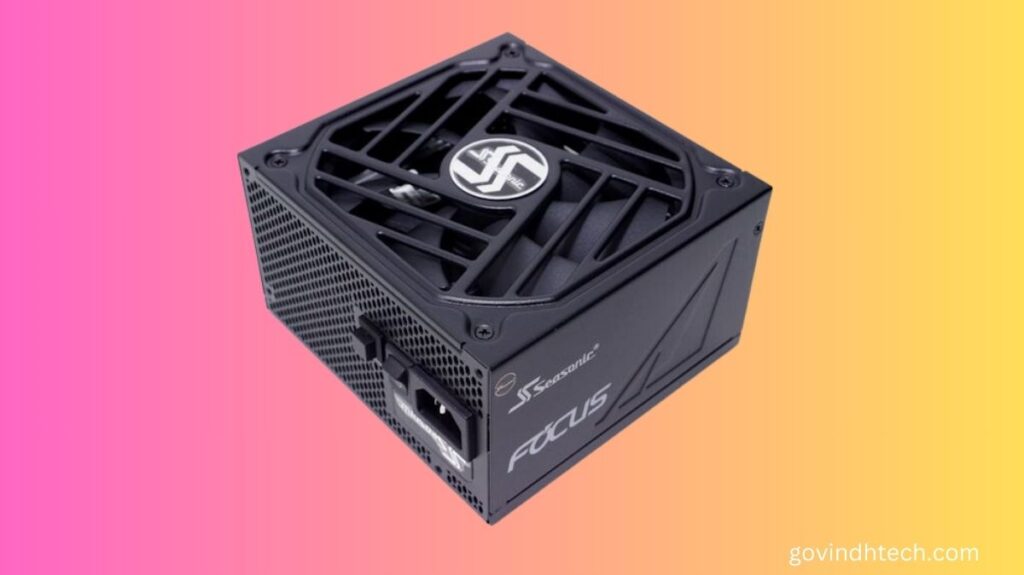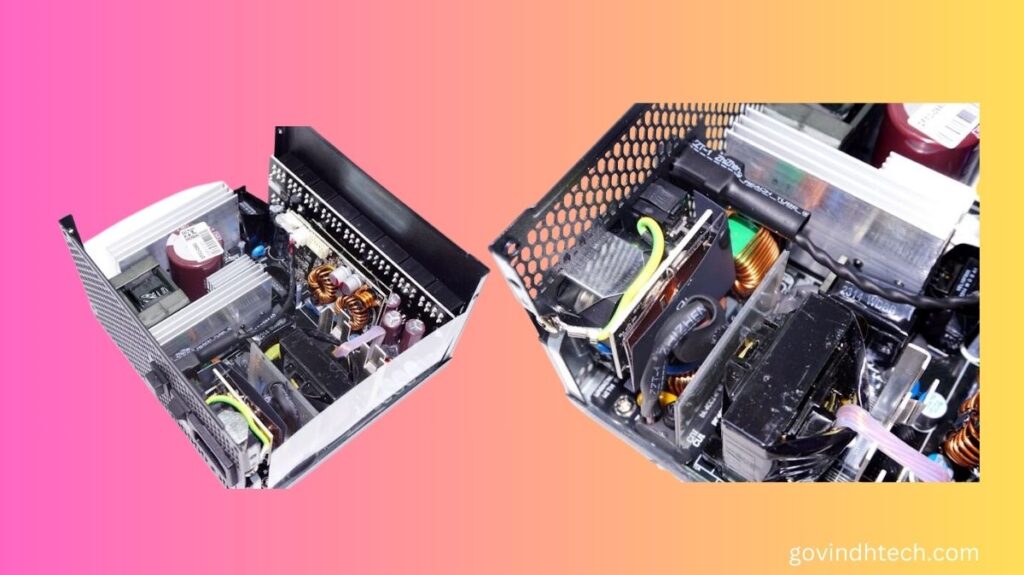The SeaSonic Focus GX-850 ATX3.0 PSU
SeaSonic focus GX-850 ATX3.0 PSU: Experienced industry players have consistently increased the standard in providing effective, dependable, and technologically better power supply units (PSUs), the fundamental component of every high-performance computer system. SeaSonic is a PSU industry stalwart whose innovative and painstaking engineering have consistently set industry standards.
SeaSonic’s highly regarded Focus series’ ATX 3.0 upgrade, which strikes a nice mix between price and performance to appeal to a wide range of PC enthusiasts and builders. It is the replacement for the Focus Plus series, which for a while was SeaSonic’s most well-liked lineup.
There are five units in the new Focus GX series, and their power outputs range from 550 to 1.000 watts. Testing the Focus GX-850, which is the second most potent model in the series. The extremely lengthy 10-year manufacturer’s guarantee, the device’s small size, its 80Plus Gold efficiency certification, and its modular architecture are the main marketing points for SeaSonic.
Bundle and Packaging
The Focus GX-850 is supplied by SeaSonic in a robust cardboard box featuring black-and-gold artwork inspired by basic geometric shapes. To ensure safe shipment, the PSU is encased in a nylon pouch and positioned between two packing foam pieces.
Given that the GX-850 is meant to be a mainstream power supply, the package that comes with it is somewhat expensive. In addition to four mounting screws and an AC power cord, SeaSonic also includes a detailed manual, many cable ties, cable straps, and a 24-pin connector jumper that powers the PSU without requiring a motherboard connection.
The Focus GX-850’s modular cables are all the same, including black connectors and wires that are individually sleeved. This includes the 12VHPWR cable as well, which is the first time the manufacturer has changed that specific cable to match the other cords on the device.
| SeaSonic Focus GX-850 ATX 3.0 | ||
| Connector type | Hardwired | Modular |
| ATX 24 Pin | – | 1 |
| EPS 4+4 Pin | – | 2 |
| EPS 8 Pin | – | – |
| PCI-E 5.0 | – | 1 |
| PCI-E 8 Pin | – | 3 |
| SATA | – | 10 |
| Molex | – | 3 |
| Floppy | – | 1 |
Outward Look
SeaSonic has managed to fit the new Focus GX-850, with enough of power provision, within the standard ATX dimensions of 150 × 140 × 86 mm (W×D×H). This means that it works with a wide variety of ATX-compliant enclosures, such as Desktop HTPC and other small configurations. The sticker with the electrical specs and certifications is situated on the upper part of the device.

While SeaSonic usually takes a minimalistic stance on design, the Focus GX-850 is an exception. Beyond just paint work, the design features a unique fan grill located at the bottom of the chassis. The original gold and grey scheme has been replaced with a black accent surrounding the fan and a grey badge at its center. The PSU’s lateral sides still include the embossed geometric motifs, and all of the unit’s faces have subtle highlights of the company and series logos.
SeaSonic has added a square locking switch to the back of the PSU in addition to the conventional small on/off switch and AC cable receptacle. This switch makes it easier to adjust the hybrid control mode of the cooling fan. By default, this mode is engaged, meaning that the fan will only run when the load reaches a point where active cooling is required. The fan’s speed remains thermally regulated even when it is deactivated; it never completely stops.
The modular cable connectors are located on the front of the chassis. To help with the cable connections, a simple legend is etched on the chassis even though the connectors are not color-coded. Due to their different connector designs and keyed layouts, the PCI Express and CPU 12V cables use the same connectors, eliminating the chance of incorrect cable insertion.
Inside Out
Once more, SeaSonic trusted Hong Hua and their HA13525H12F-Z 120 mm fan to handle the cooling of their Focus series. Although it has a straightforward black appearance, the superior Fluid Dynamic Bearing (FDB) within promises a long lifespan and comparatively low noise levels, according to SeaSonic. Its maximum spinning speed of 2000 RPM is typical for a fan with a diameter of 120 mm.
Since SeaSonic is the company that designs and manufactures the units, we don’t need to figure out who the underlying OEM is for their offerings. Upon initial observation, it enables us to discern that, in contrast to numerous other producers, SeaSonic’s engineers undertook significant measures to completely conform to the ATX 3.0 specification by reworking the basis upon which the preceding Focus series was built. Because the PCBs are joined by solid copper bridges, the interior of the device is incredibly neat and does not contain any loose cables.

Four Y capacitors, two X capacitors, and two filtering inductors make up the filtering stage, which starts on the little PCB at the back of the AC outlet and moves onto the main PCB. Half of the main stage’s inversion transistors are housed in the same heatsink as two bridge rectifiers.
The enormous 680μF capacitor of the APFC stage is supplied by Nippon Chemi-Con and is situated adjacent to a similarly large filtering inductor. The lengthy heatsink that runs around the edge of the PCB contains the two 6R190P6 power transistors, a diode, and the active PCF components. A full-bridge LLC inversion stage was implemented by SeaSonic, which is uncommon to see inside a mainstream unit. The input rectifiers and two power transistors (GPT13N50DG) share a heatsink. The other two power transistors have their own heatsink.
Four IC840L MOSFETs on the opposite side of the transformer and the underside of the main PCB produce the single 12V line. On the vertical daughterboard, which also houses the fan controller, are the DC-to-DC converters for the 3.3V and 5V voltage lines. The capacitors on the secondary side are a combination of Nippon Chemi-Con, Rubycon, and Nichicon products, all made in Japan.


